
Boomers grew up in a world where chores weren’t optional, and they certainly weren’t paid for. Helping around the house was part of being in a family. From hauling buckets of water to scrubbing floors on hands and knees, many of the tasks they did would shock kids today.
Hanging Laundry on the Clothesline

Before electric dryers were in every home, doing laundry meant hauling wet clothes outside and pinning them up by hand. You had to time it with the weather, avoid bugs, and sometimes re-hang if it rained. The crisp scent of sun-dried sheets was nice, but the chore itself took time, patience, and physical effort.
Ironing Everything, Even Handkerchiefs
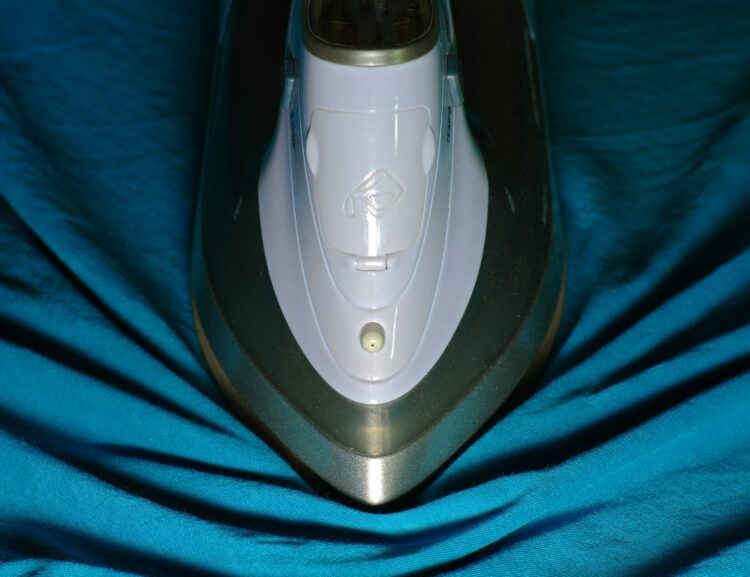
Back then, ironing wasn’t reserved for dress shirts. Kids were often taught to iron handkerchiefs, pillowcases, school uniforms, and even socks. The process involved setting up a heavy board, carefully managing steam, and mastering the technique — all without burning anything. Today’s wrinkle-release sprays and “casual wear” would’ve been unthinkably lazy to their parents.
Cleaning the Ashes Out of the Fireplace or Stove

If your family had a wood-burning stove or fireplace, it needed regular cleaning. Removing ash was dirty work, and it had to be done just right or soot would go everywhere. Some kids had to get up early to get the fire going in winter — something most modern kids can’t even imagine.
Washing Dishes by Hand — After Every Meal

There was no piling up dirty plates for “later” and definitely no dishwasher to hide them in. After every meal, kids had to scrape, soak, wash, rinse, and dry. And drying meant a real towel, not air-dry. It was a group effort, often full of arguing, but also oddly bonding.
Beating the Rugs Outside
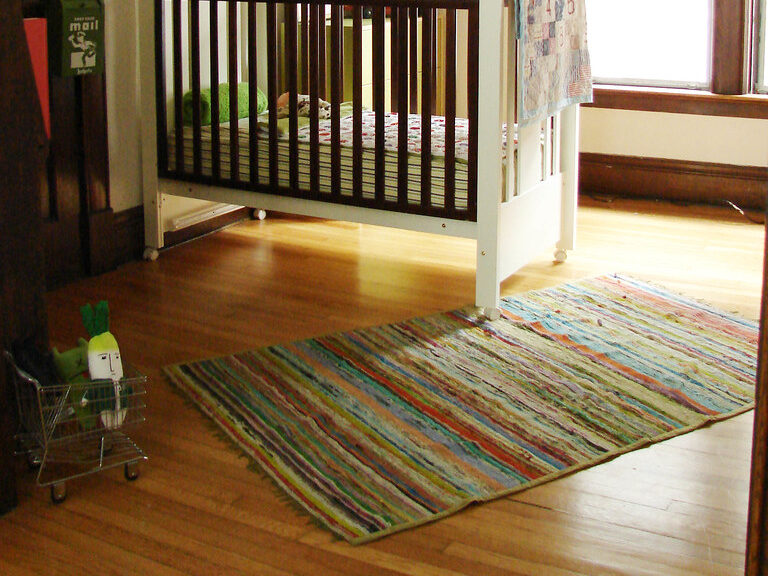
Vacuuming wasn’t always an option, especially for heavy rugs. Instead, you’d take them outside, hang them over a line or railing, and beat them with a carpet beater until the dust flew like smoke. It was exhausting and messy — and an experience today’s kids would probably report as a lung hazard.
Raking Leaves and Bagging Them by Hand

Fall didn’t mean jumping into leaves for fun. It meant long afternoons of raking until your arms hurt. You didn’t just rake them into a pile. You had to stuff them into paper or plastic bags by hand. There were no leaf blowers, no shortcuts, just blistered hands and a sore back.
Mowing the Lawn With a Push Mower
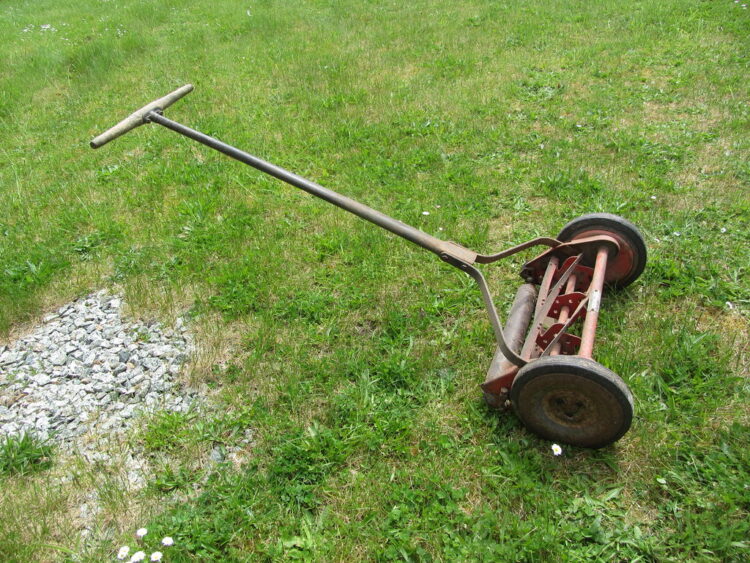
Gas-powered mowers were a luxury. Many Boomers started mowing the lawn with a reel mower — the kind with no motor, just spinning blades powered by pure effort. Wet grass made it harder, and you had to empty the clippings into a bag. It was noisy, sweaty, and part of every weekend.
Shoveling Snow Without Help

When it snowed, school might stay open, but your driveway still needed clearing. Shoveling snow was a serious job that required stamina and layers of clothing. There were no snowblowers, and your back did all the lifting. Skipping it wasn’t an option. You just bundled up and got it done before breakfast.
Polishing Shoes for the Whole Family

Polishing shoes wasn’t a cosmetic task — it was expected. Every scuff had to disappear, and you had to shine them using polish, a cloth, and elbow grease. Many Boomers learned how to apply polish evenly and brush to a shine before they were even teens. Now, most shoes never even see polish.
Cleaning Windows With Vinegar and Newspaper
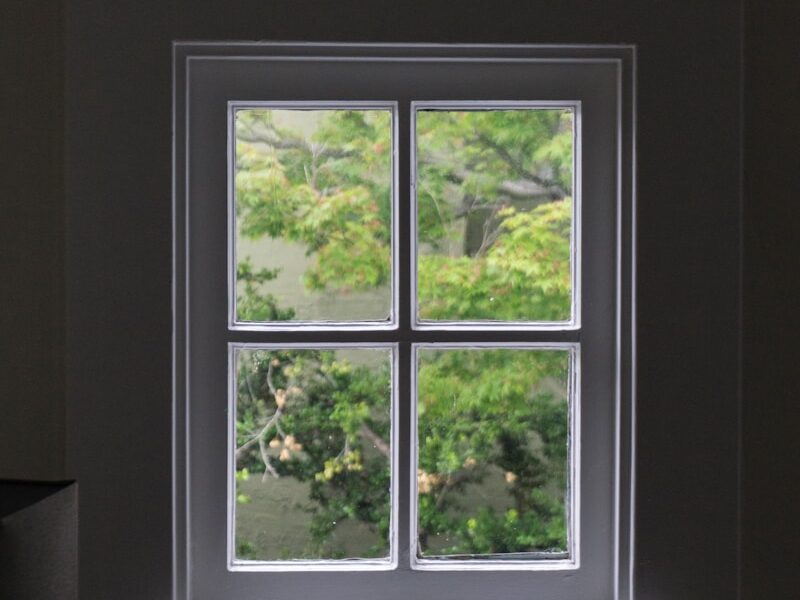
Before Windex became the go-to solution, many households used vinegar and crumpled newspaper. It smelled strong, left your hands black with ink, and took forever to get a streak-free shine. Washing windows inside and out, especially on a ladder, was a whole-day job, often assigned to the older kids.
Peeling Potatoes and Shelling Peas

Mealtime started long before anything hit the stove. Kids helped prep vegetables, especially if they were homegrown. You’d sit at the table or on the porch, peeling potatoes into a bucket or popping peas from their pods one by one. It wasn’t glamorous, but it brought the family together before dinner.
Dusting Every Surface — Not Just the Easy Ones

Dusting wasn’t a quick swipe of a cloth. You were expected to lift every picture frame, polish wood furniture with lemon oil, and reach up to high shelves or crown molding. Even baseboards and lamp cords had to be cleaned. It was detail-oriented work that taught Boomers what “clean” really meant.
Scrubbing Floors on Hands and Knees

Mops existed, but they weren’t always trusted. Many moms believed the only way to truly clean a floor was on hands and knees, scrubbing every inch. Boomers often had to help, using soapy buckets, stiff brushes, and rags. The job was grueling, especially in kitchens, but it was a rite of passage.
Wringing Out the Mop by Hand

When you did use a mop, it didn’t come with an easy wringer. You had to twist it yourself over a bucket, getting your hands wet and dirty. The water turned gray fast, and you’d have to change it mid-clean. For Boomers, this was part of regular Saturday chores without complaint.
Cleaning Out the Refrigerator
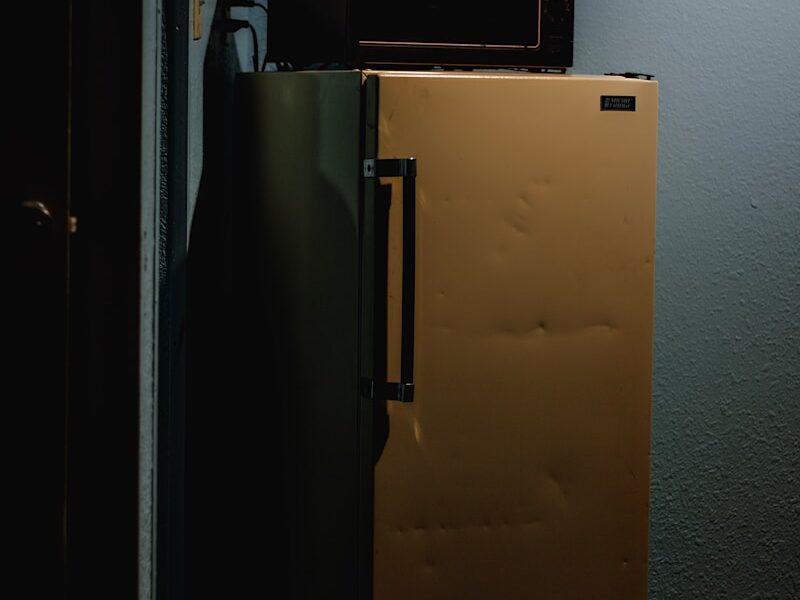
Once a month, or whenever it “smelled off”, you’d be told to clean out the fridge. That meant taking everything out, tossing questionable leftovers, scrubbing sticky glass shelves, and wiping down drawers by hand. No fancy removable trays or antibacterial wipes. It was cold, messy, and completely necessary.
Taking Out the Trash Without Wheels

Today’s rolling bins are easy. But Boomers often had to carry heavy metal cans or bags by hand to the curb — or worse, to a burning barrel out back. Trash collection wasn’t always reliable, and you had to keep animals from tearing it up overnight. It was a messy, smelly task no one liked.
Making the Bed With Hospital Corners

You weren’t allowed to just toss a blanket over the mattress. Beds had to be made with flat sheets, tucked corners, and even spacing — often with supervision. “Hospital corners” were serious business, and sloppy folds were redone. It taught discipline and attention to detail, whether you liked it or not.
Rinsing and Returning Glass Bottles

Bottled drinks came in glass, and families returned them to the store for deposit refunds. Before doing so, you had to rinse each one by hand and organize them in crates. This was often a kid’s job, and doing it wrong meant sticky messes, broken glass, or forfeiting the deposit.
Defrosting the Freezer Manually
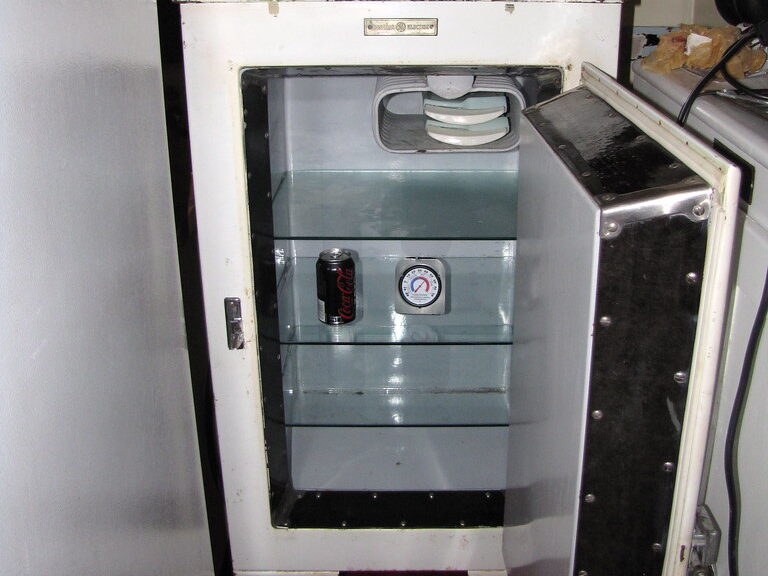
Before frost-free technology, the freezer turned into a winter cave. Kids were sometimes tasked with chipping out ice using a spoon or butter knife, catching melting water in pans. The process could take hours and left puddles everywhere. But it had to be done to keep the appliance running.
Helping With Canning and Preserves

If your family grew a garden, you helped can. That meant sterilizing jars, filling them with hot fruit or vegetables, sealing lids, and labeling. It was hot, repetitive work, but it fed the family through winter. Kids learned how to safely handle boiling liquids long before most had cooked a meal.
Sweeping the Sidewalk or Driveway
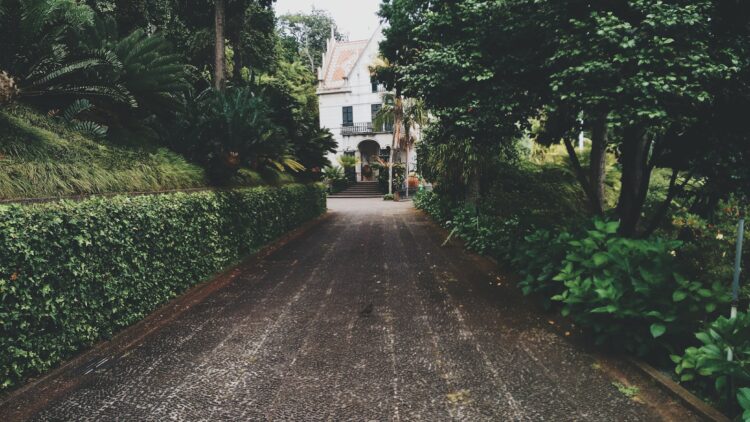
Even outdoor spaces had to be tidy. You’d be handed a push broom and told to sweep leaves, dirt, and dust from sidewalks, patios, or porches. It was especially important before guests came over. The job could take an hour or more and was often assigned the moment kids said they were bored.
Washing the Family Car by Hand

Boomers didn’t grow up with drive-through car washes. If the car was dirty, kids grabbed a sponge, a bucket of soapy water, and a hose. You’d scrub every inch, rinse carefully, and then dry it with towels to avoid streaks. Some even waxed the car afterward as part of their “chore list.”
Bringing in the Groceries and Putting Them Away
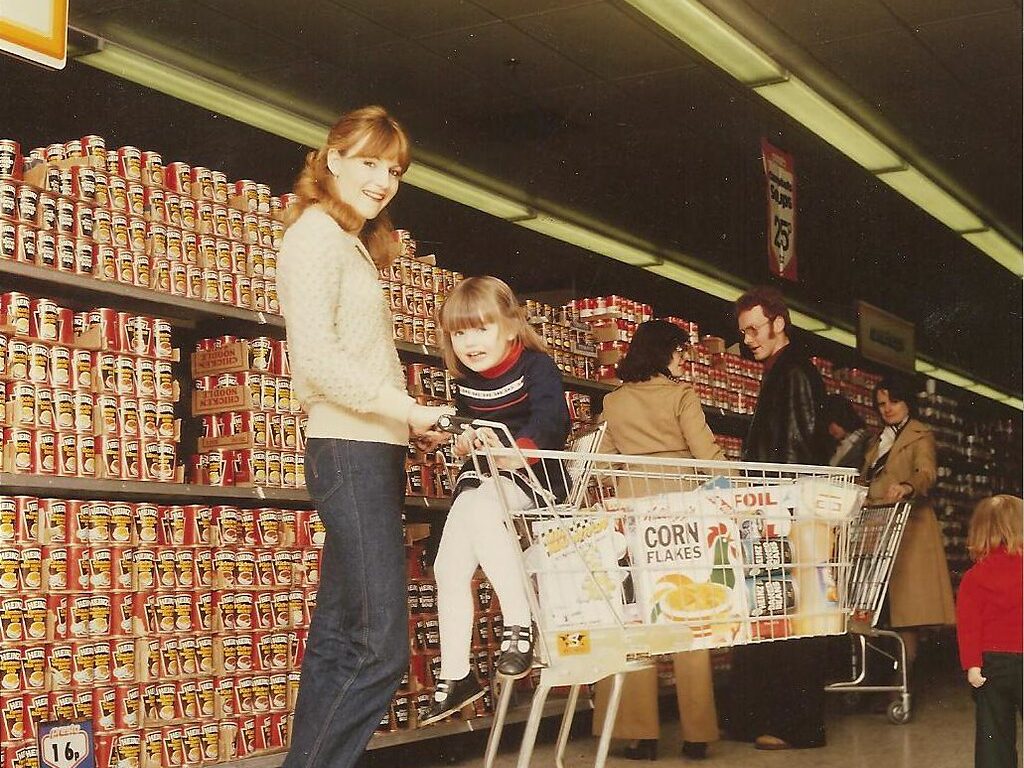
There was no complaining about grocery bags being too heavy. Once the car pulled in, kids came out to help. You carried everything in, sorted the pantry from fridge items, and sometimes even helped write inventory lists. It was a team effort, and every kid had a role whether they liked it or not.
Picking Up After the Family Dog

Even dog chores were part of the daily grind. Walking the dog, brushing it, cleaning up backyard messes, and washing food bowls were often jobs assigned to the youngest kids. There were no poop bags — you used a shovel or did what you were told. It was expected, not rewarded.
Weeding the Garden by Hand

You didn’t just admire the garden — you maintained it. That meant crouching for hours, pulling weeds by hand, and being careful not to destroy the actual plants. No gloves, no weed killers. It was messy, slow, and exhausting, especially under the summer sun. But it taught care, responsibility, and respect for food.
Helping With Younger Siblings

Being the older sibling wasn’t just a title — it was a job. You’d feed babies, carry toddlers, change diapers, and babysit while parents worked or ran errands. No pay, no breaks. You were expected to act mature, even when you were just a kid yourself. It was part of being in a big family.
Carrying Buckets of Water for Outdoor Chores

Before garden hoses and pressure sprayers were everywhere, you carried water in metal or plastic buckets to clean porches, wash windows, or water plants. Spills meant starting over. Kids would take turns, and if someone dropped the bucket or tripped, it was a long trip back to the faucet.
Burning Trash in a Barrel

Before widespread municipal trash pickup, some families burned their garbage. Kids helped light the fire, stirred it with a metal rod, and kept watch to make sure nothing blew away. The smell stuck to your clothes, and you had to be careful not to get burned. Most kids today wouldn’t be allowed near it.
Running Errands Alone on Foot or by Bike

If you needed milk, bread, or a newspaper, you walked or biked to get it. Parents gave you cash, and you handled the transaction yourself. You were trusted to cross streets, carry change, and remember the list. It taught independence early — long before cell phones or tracking apps existed.
Helping Fix Things Instead of Replacing Them

When something broke, it wasn’t tossed out. You fetched tools, held flashlights, and handed over screws while your parent tinkered. Watching them fix a toaster, mend a screen, or patch up the roof taught you patience and practicality. That hands-on involvement is nearly lost in a world where most things get replaced instead.

